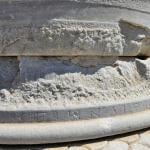In her Voracious Idols and Violent Hands: Iconoclasm in Reformation Zurich, Strasbourg, and Basel , Lee Palmer Wandel shows that images in medieval Christianity were modes of God’s presence. In attacking images, Protestant iconoclasts were acting on an alternative understanding of that presence: “For the iconoclasts, what was ‘present’ through all the images in the churches made them ‘idols.’ With their acts, they invoked ways in which Christ was indeed present: in the practice of Christian brotherly love, in the Eucharist, in the cadences of the Christian year, in the proper attitude of secular and ecclesiastical leaders to their congregations.”
Destroying images was of a piece with breaking down the entire edifice of medieval Catholicism: “When framed in the ethics of Christian brotherly love, the images’ voracity became manifest. When connected to altars, images’ participation in the enactment and definition of the mass became explicit. When iconoclastic acts pointed, albeit obliquely, to the objects’ participation in the human culture of Christianity, with its separation of clergy from their congregations, the images’ role in that division of the Christian community became perceptible.” Images were thus “in conflict with, and even in opposition to, Christ’s presence in the world.”











